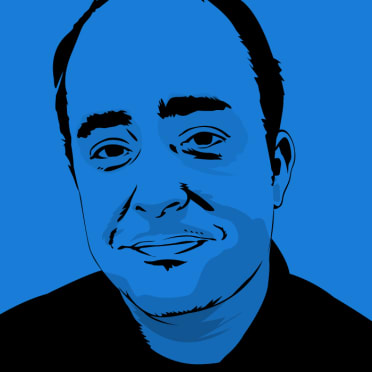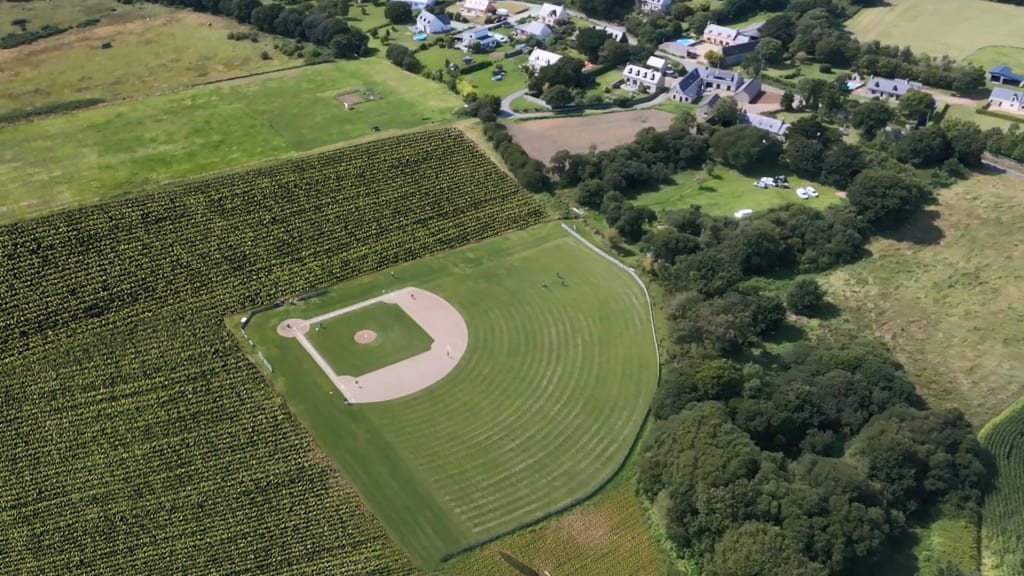
If you owned a gorgeous farm in the French countryside, what would you do with it? Would you devote much of your day to cultivating crops and maintaining the grounds to the best of your abilities?
You probably would. That’s what farmers are known to do, after all.
But what if you also felt the spark to build a spectacular baseball field right in the middle of the lush greenery?
Enter Mathieu Pung, a man who felt compelled to balance his everyday life tending to the grounds of his family’s estate in Bretagne, France, with undertaking the building of a venerable “Field of Dreams” right there in the picturesque locale.
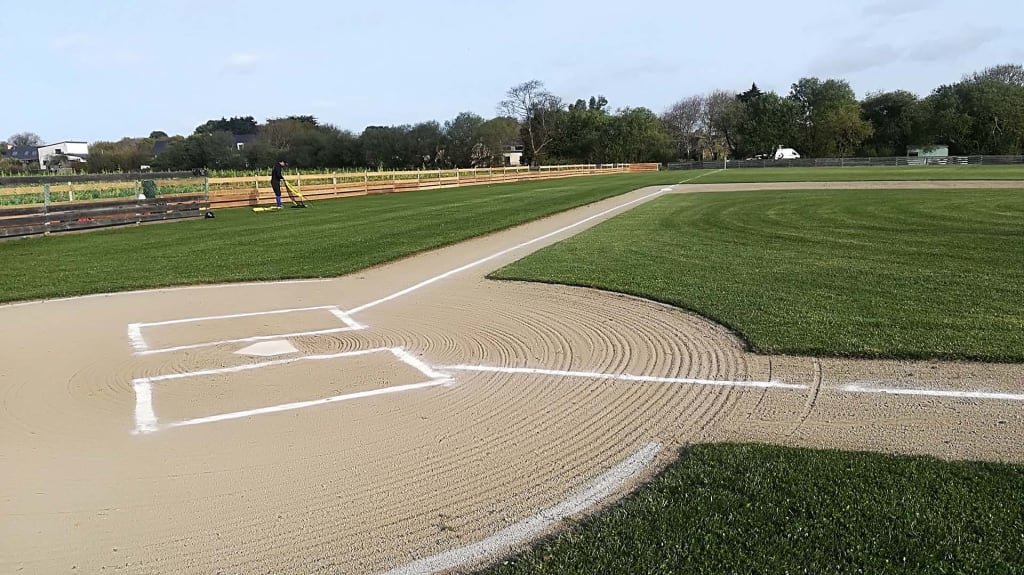
Born in France to a French mother and a Texan father, Mathieu Pung didn’t fancy himself a modern-day Ray Kinsella, nor does he attribute any of this to hearing an ethereal, otherworldly voice compelling him to put shovels in the ground. He played Little League in Texas and wanted to continue that path, but a roadblock in high school caused by his small size compared to his peers pretty much wiped out his own Major League aspirations, and he eventually wound up back in France to “get a little back to my roots,” as he told MLB.com.
A multi-skilled “two-way sensation” of his own in the vein of Shohei Ohtani -- trading pitching and hitting at a historic rate for farming and baseball diamond-building, in addition to product design and sculpting -- Pung says this actually wasn’t always an aspiration of his.
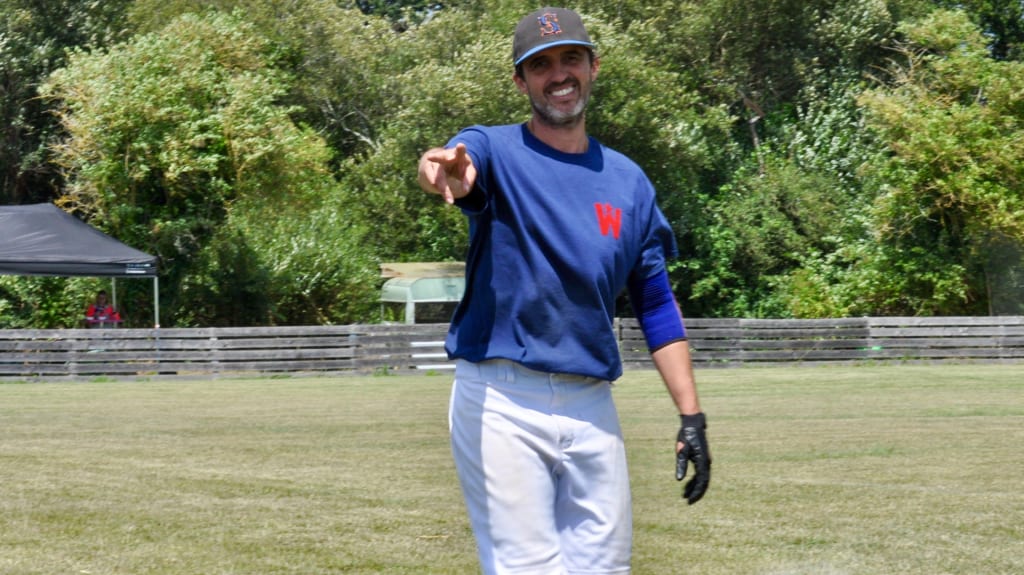
“It wasn’t ever really planned, in a sense,” Pung said of his journey. “I wasn’t ever, like, ‘This is my five-year goal,’ or anything. It just was a domino effect of events where we acquired a bunch of land around the house because there was a project that was gonna go through, which would have really torn up the tranquility of the area.”
At some point, he and his father, Marvin, became interested in the idea, and the resulting creation bears the elder Pung’s name: Marvin Field.

“They were going to do mutton farming, which was sheep farming, cutting the meat and everything, and sell it right behind my house. It was just a disaster. So I negotiated it, the guy dropped the project and I got stuck with thickets, probably the equivalent of 10 acres of farmland.
“So right away I see these corn fields, you know, acres and acres of cornfield behind my house, and I’m like, ‘Huh .... ’”
It was around this time that Pung also reconnected with his local baseball career, playing with a regional team and finding himself somewhat concerned about the quality of the playing fields he was seeing.
“Half of the baseball teams in France are all playing on rugby fields, mainly, or soccer fields with … the grass is not cut for baseball, it's cut for a bigger ball, right?
“So I said, ‘You know what?’ Things take forever in France if you go through the right way to do it, so I asked myself, ‘What can I do?’
“I said, ‘Hey guys, I think I'm gonna build a baseball field, I'm going to cut some of that corn and I'm going to build it so the guys actually can feel what it's like to play on a real diamond.”
The COVID-19 pandemic then struck, and the shutdown of most regular everyday activities was actually a major windfall for the progress of this unintentional baseball diamond cultivation.
Pung leaned on the expertise of some friends in various industries, devoted much of his day to studying videos on showcasing other backyard ballparks and the like, to see how this all might (or might not) work, logistically.

“I'm a bit of a nerd,” Pung admits of his process. “I mean, I'll just really get in there. I went through every video, I think, and I was shocked how much it's either really professional, with the maintenance level of MLB fields, or on a tiny budget or some kind of goofy backyard Wiffle Ball field. There’s very little in between.
“So I learned all the tech, how much it costs, and how to do it in a green way, in a sense, where you're not using too many products. I can tear down that field tomorrow in probably a day, and people could grow corn back on it and the next harvest. That was the idea to make it sustainable.”
Pung put together a meticulously detailed video chronicling how the field was made, and it’s really quite astounding -- the effort, the precise details and the seemingly exhausting number of logistical steps that were required.
His video has lent inspiration to other people aspiring to build similar baseball facilities in neighboring areas of France, with some reaching out to him directly for tips and advice after discovering his process.
It’s easy to see why: Pung’s field is a breathtaking ballyard in arguably one of the most beautiful surroundings you could imagine.
“You can be one guy with the right amount of equipment,” he recalls. “And it doesn't have to be that complicated.”
Once the field was game-ready, Pung said, his teammates’ jaws were on the floor.
“It was a pretty sweet reaction,” Pung recalled. “You drive up through my driveway, you're not expecting much, because you can't see it from the road. And then you park by my house, walk about 100 meters, and you get to see it.
“It's a little out of the way, so people have to drive 20 minutes more. But once they get there, they're like, ‘This is the dopest field I've seen in France that's not artificial turf, in terms of quality of play.’ It's pretty on-point, I have to say, and that was the goal.”
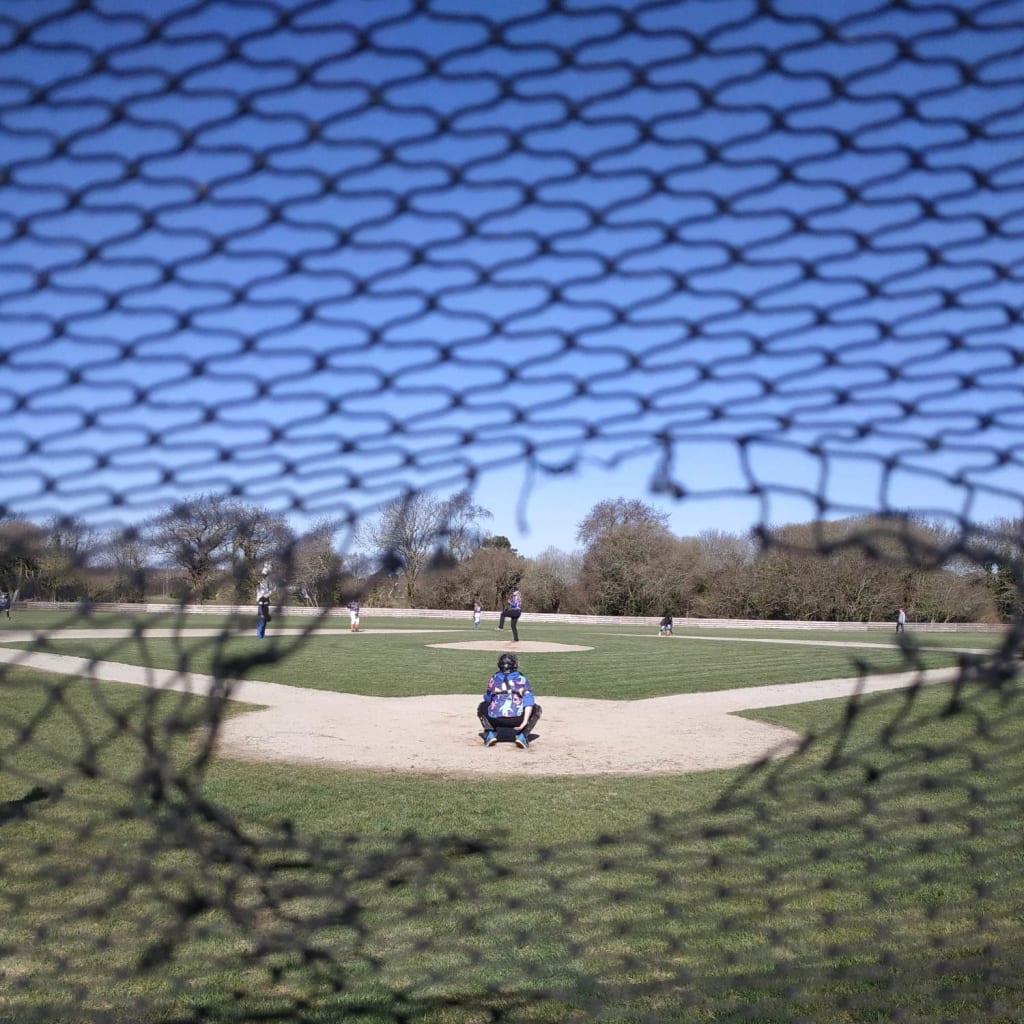
Pung explained that when winter rolls in, he lets the field go a bit and allows nature to take its course -- appropriate, since winter isn’t baseball season anyway -- but he’s always maintaining it and has to cut the grass once a week in the spring once weeds pop up on the grounds.
Pung also recalled a bit of an issue with wild hogs who turned up uninvited and ravaged some of the field, forcing him to erect a fence around the outfield.
“You would never think that that would be the biggest predator of a baseball field,” he said. “But that almost destroyed my ballfield because they turned over the grass. Wild hogs around the baseball field is the scariest thing, every night I wake up and I'm like, ‘Is my right field still in good condition?”

But these are the challenges of keeping up a labor of love such as this, and the feedback Pung continues to receive regarding his field makes it all worth it.
In fact, he hopes for bigger things for the field on an international level.
“There's never been a master plan,” said Pung, “but it's happened naturally … three years ago, we hosted an All-Star Game. We get the best players on the west coast of France, basically, to come to the field and do an American Day, where we serve hot dogs and corn dogs and popcorn. We have an organist playing tunes you'd hear in an American field, and I invite the local mayors and townspeople and people who would never get a sense of that experience otherwise.”
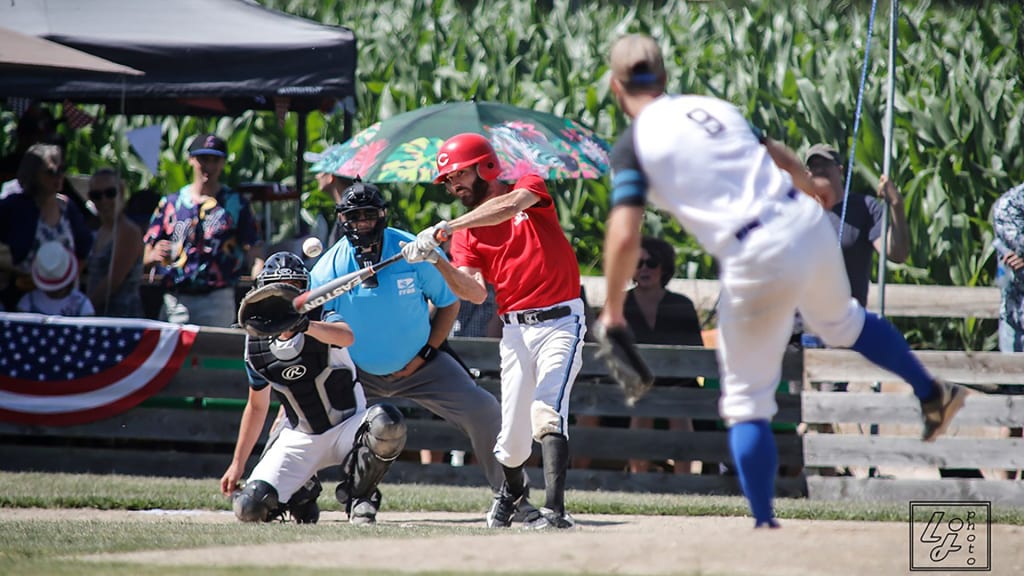
In terms of infrastructure, in order to host bigger events at his baseball diamond, Pung cites standard operational requirements -- toilets, security, running water a certain distance from the gathering spot, and so on -- as obstacles that would need to be handled to make these events possible.
“Those are the things that can impede, but we're enjoying just spreading the American love of the game and that's pretty much it.”
Obviously, the “Field of Dreams” comparisons are unavoidable, but Pung leans into them, even suggesting that he’d love to host an event similar to what Major League Baseball put together in 2021 with the “MLB at Field of Dreams Game” between the White Sox and Yankees at a field in Dyersville, Iowa, adjacent to the actual filming site of the cherished 1989 movie.
“We would love to do that on a lower-scale, on a different level, and keep that local feel.”
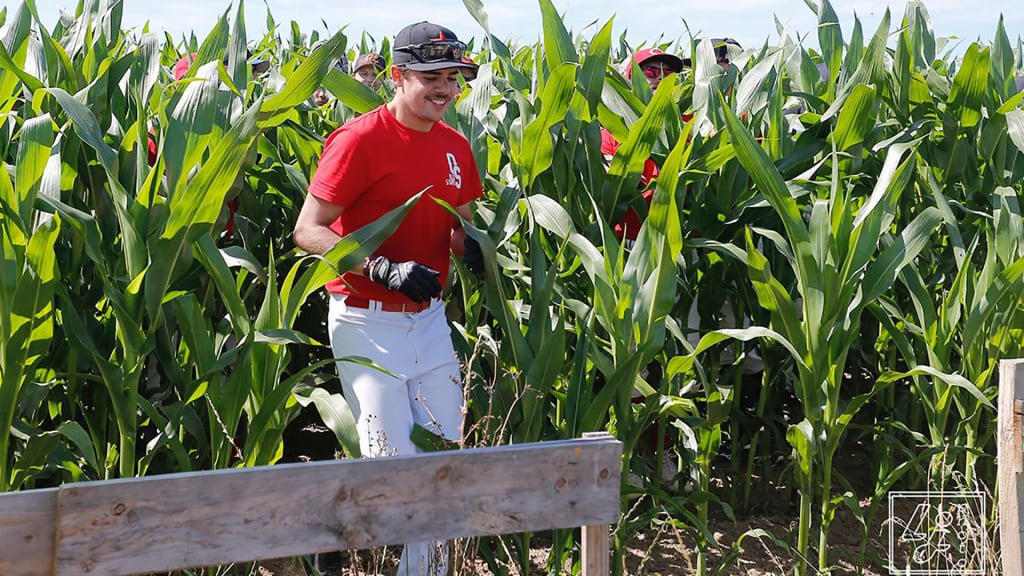
Pung’s “Field of Dreams” also continues to garner attention at an intriguing time for French baseball.
The White Sox selected just the second French-born player chosen in the Draft, a fireballing right-hander named Mathias LaCombe, in 2023. LaCombe showed his stuff on the global scale in the World Baseball Classic and is looking forward to beginning his professional career with hopes of making a difference in the Majors at some point.
What level of baseball interest is there in France?
“It’s kind of all-in or not at all,” Pung recounts. “People have this little niche love for it, so if you like American football, you like Corvettes, American music, people go all-in on the American thing. Some of the French guys that I played with, they follow MLB way more than I do, they just go deep into it.
“Otherwise, you’ve got to explain what baseball is in France at a dinner party. … But yeah, France is climbing slowly. It's still a bit of a niche thing right now.”
Overall, Pung is thoroughly satisfied with his creation. Though he hasn’t yet spotted any baseball ghosts in his field, he has a few he hopes to see emerge from the tall corn stalks ready to revisit a bygone era.
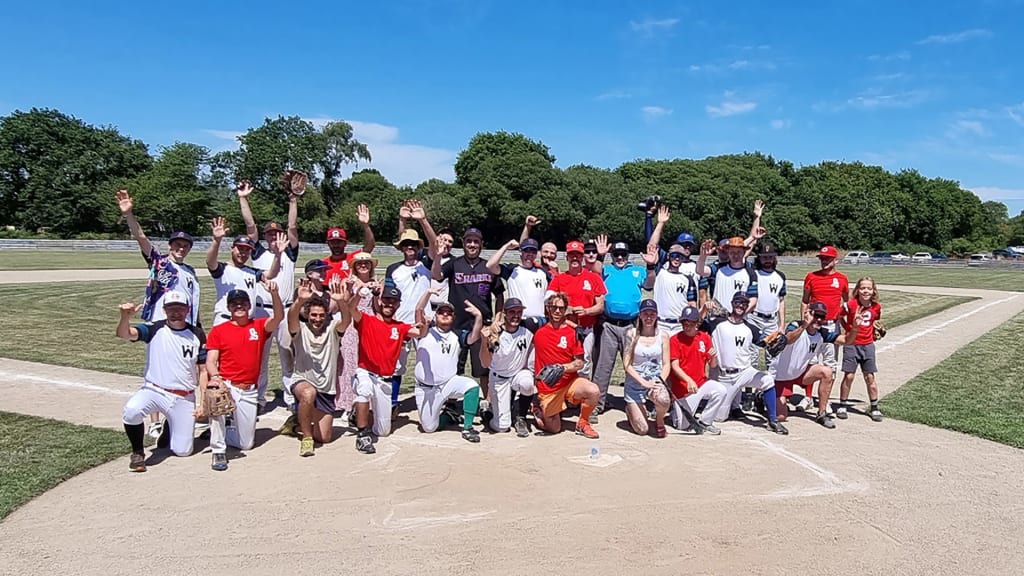
“I'd like to see Babe Ruth. I'd like to see him pitching. Everybody sees him hitting, but I'd like to see what it actually looks like pitching against somebody like Joe DiMaggio or Mickey Mantle. I’ve gotta go that way.”
Despite the absence of legendary baseball ghosts so far, Pung is still quite proud of his accomplishment.
“It's been a dream come true. Pretty amazing,” he said.
